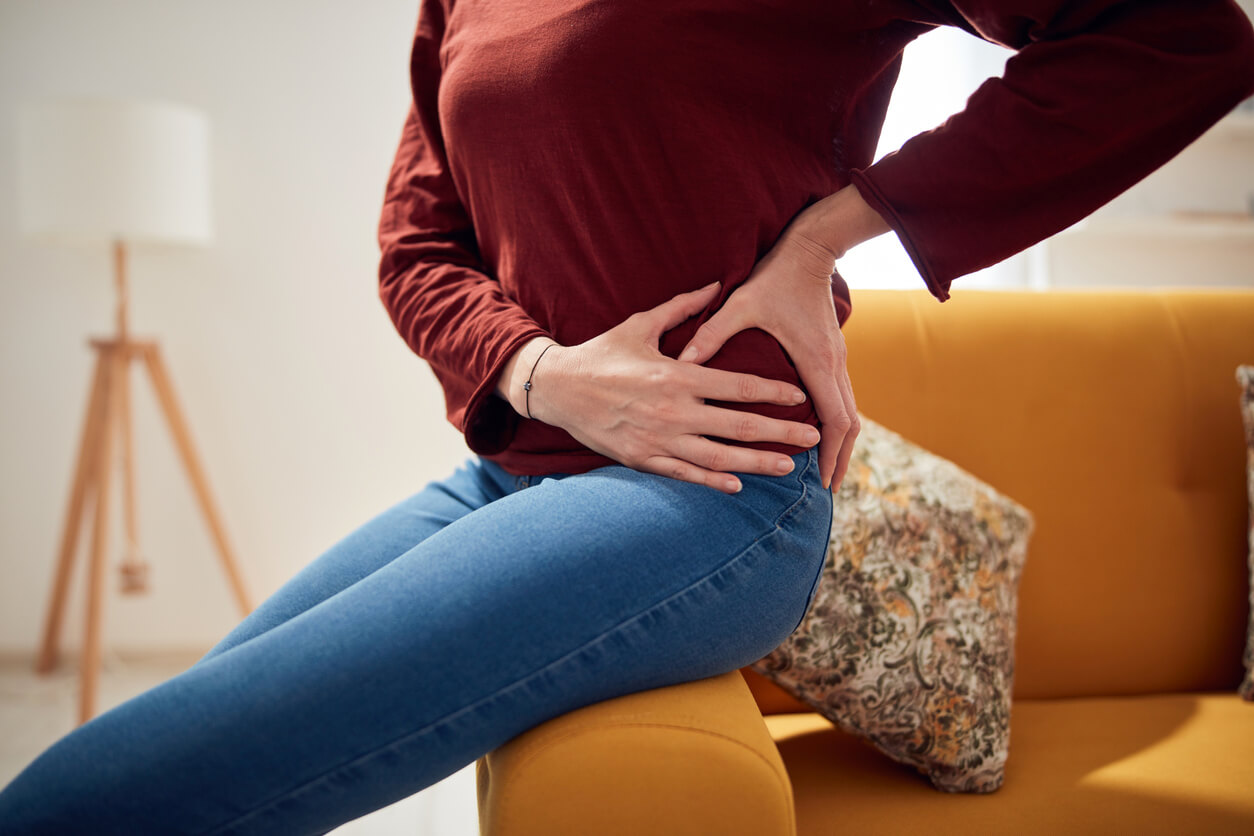Many patients come to Long Island Spine Rehabilitation Medicine complaining of hip pain that interferes with their daily activities. Often the cause of this pain is trochanteric bursitis, an
inflammation of the bursae (fluid-filled sacs near a joint) at the part of the hip known as the greater trochanter. Because our medical practice centers on relieving pain and restoring function without surgery, our doctors are ideally suited to treating this condition.
Our physiatrists are also excellent diagnosticians,well-prepared to differentiate one hip problem from another, so if you’re unsure of what’s causing your hip pain, contacting us is a good first step toward finding relief.
What exactly is the trochanter and where exactly is it?
The femur, the longest bone of the body, extends from the hip to the knee. The head of the femur joins the pelvis to form the hip joint. Adjacent to the femoral neck, two protrusions known as the greater and lesser trochanters are the sites of the muscle attachment that give the hip mobility.
The greater trochanter is the bony knob at the top of the femur, the protrusion we normally refer to as “the hip.” Its bulbous head makes contact with the pelvis and forms the ball of the ball and socket joint.
Causes of Trochanteric Bursitis?
There are a number of causes of trochanteric bursitis, including:
- Injury — falling onto the hip, banging the hip against a hard object, or spending an inordinate amount of time lying on one side of your body
- Occupational or recreational activities that overuse the hip joint — like standing for extended periods, climbing, or running upstairs
- Incorrect posture as a result of scoliosis, arthritis of the lumbar (lower) spine, or leg length differences, any of which may put stress on soft tissues
- Disease conditions, like rheumatoid arthritis, gout, psoriasis, thyroid disease
- Previous surgery in the area
- Bone spurs or calcium deposits in the region
- In rare cases, an adverse drug reaction or infection
It should be noted that bursitis is more common in women and in middle-aged or elderly people and that some cases of bursitis are of unknown origin.
Symptoms of Trochanteric Bursitis?
Symptoms that may bring you to consult with our physiatrists include:
- Pain on the outside of the hip and thigh or in the buttock
- Pain when lying on the affected side
- Pain when pressure is applied to the outside of the hip
- Pain that worsens when getting out of a car or rising from a deep chair
- Pain when walking upstairs or squatting
As with other painful conditions, you should be aware that swelling, worsening pain, or fever are indications that you require immediate medical care.
Diagnosis of Trochanteric Bursitis
At Long Island Spine Rehabilitation Medicine we have several methods for diagnosing trochanteric bursitis and are always careful to distinguish this condition from others that may have similar symptoms, such as tendonitis, fracture, muscle, strain, sprain or tear.
Diagnostic tests for trochanteric bursitis may include:
- Clinical examination of the area, including palpation
- X-rays to look for bone spurs or arthritis
- Aspiration of fluid from a swollen bursa to eliminate gout or infection as a cause
- MRI to see whether fluid has collected in the bursae (not always visible)
Once our doctors have confirmed a diagnosis of trochanteric bursitis, we are practiced in administering a broad range of possible treatments, both traditional and complementary, often in combination.
Treatment of Trochanteric Bursitis
Our goal is always to reduce inflammation and the pain and swelling it causes. We want to restore your mobility and prevent the recurrence of the problem.
Typically, by the time patients come to us, they have already tried resting, over-the-counter anti-inflammatories (NSAIDs), and applications of ice and/or heat. Treatments we offer may include:
- Assistive devices (such as a cane or crutches) for a short time
- Ultrasound-guided analgesic/corticosteroid injections to decrease pain and inflammation
- Customized physical therapy to restore range of movement, strength, and flexibility
- Platelet-Rich Plasma Injections (PRP) to promote healing
- Acupuncture to relieve pain and inflammation
- PEMF (Pulsed Electromagnetic Field) therapy which relieves pain, decreases inflammation, and increases blood flow to accelerate healing
Contact Our Experienced Physiatrists — We Have a Track Record of Success
At Long Island Spine Rehabilitation Medicine, we do not deal with abstractions. We are a hands-on practice dedicated to making you feel better as quickly as possible. Whether you are suffering from hip pain caused by trochanteric bursitis or some other spinal or musculoskeletal issue, the sooner you contact us, the sooner we can alleviate your pain and get you back to your normal routine.
